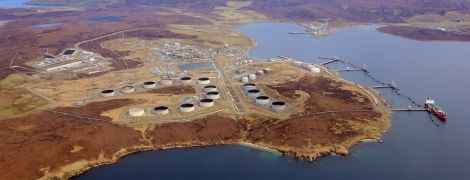Energy / University study exploring how green hydrogen production would impact local economy
A STUDY is underway on what impact local green hydrogen production could have on the Shetland economy.
The work is being undertaken by the University of Strathclyde’s Centre for Energy Policy.
It will also explore how Shetland’s “extensive renewable wind power, supply chain and infrastructure capacities […] could contribute to the island’s transition to a prosperous and low-carbon future”.
It comes as energy companies look towards developing green hydrogen production facilities in Shetland, such as at Sullom Voe Terminal (SVT).
Meanwhile a new report from Aberdeen based Net Zero Technology Centre has highlighted Shetland as among the optimal locations in Scotland for green hydrogen production – hydrogen made using renewable energy such as wind power.
The centre has also supported the idea of a hydrogen export “backbone” link which would tie into SVT and other terminals in Scotland and run to mainland Europe.
Locally, SVT is set to be repurposed into a green energy hub in the move away from fossil fuels, while the nearby Scatsta Airport has also been targeted for green hydrogen production by Statkraft plus partners.
SVT operator EnQuest previously said it was aiming to produce one million tonnes of hydrogen a year from the terminal site.
Statkraft is also exploring the potential for another hydrogen project within a four kilometre area of Lerwick.
While hydrogen – which does not release carbon dioxide when burned – is an emerging fuel, it is already being used in some forms of transport, for example.
The University of Strathclyde’s Centre for Energy Policy director Professor Karen Turner said the aim of the research project is to understand what a shift towards green hydrogen production would mean for Shetland’s economy.
The particular focus at this stage is on SVT, the cornerstone of Shetland’s links to oil and gas which is set to go much ‘greener’ in years ahead.
Become a member of Shetland News
“If the activity at Sullom Voe changes to a green fuel, what will it mean for Shetland’s economy?” Professor Turner told Shetland News.
“One extreme could be it won’t really make that much difference, [if] it’s got a similar local supply chain. Transition-wise that could be a good outcome, because you’re changing from a fossil fuel to a low carbon thing, but you still retain all the economic benefits – the jobs, the income generation.
“But then on the other hand what if the supply chain changed?”
She also said there could be issues over how competitive the activity through Sullom Voe would be compared to hydrogen that is being produced elsewhere in Europe.
This project is part of a wider £10 million Ocean-REFuel project led by the University of Strathclyde, which is investigating the potential of harnessing offshore wind and marine renewable energy to produce zero carbon hydrogen and ammonia fuels.
The university team has already engaged with firms like EnQuest and Statkraft – which is also planning three wind farms in Shetland – as part of the project, as well as Shetland Islands Council.
In the first stage of the project the team has been working with the council to investigate the number of jobs supported by oil and gas industry activity in Shetland.
Data shows that in recent years around 170 full-time equivalent workers have been employed at SVT. But through supply chain linkages and how employees spend their wages, activity at the terminal is thought to have supported around a further 320 jobs.
This spans sectors such as ports, harbours, transport, retail and catering.
Meanwhile there is up to 2.3GW of offshore wind power potentially coming Shetland’s way in the years ahead, with developers already talking about using that green hydrogen production.
But with offshore wind east of Shetland many years away, Professor Turner said green hydrogen might take electricity from onshore wind farms to begin with.
She said the evolving energy picture in Shetland was a complex one, and the professor conceded that the community has limited input into it all.
“People up in Shetland must be saying we’ve had all this wind for all these years and now it might actually be a source of benefit,” she said.
“You can see the pieces – but exactly how they fit together is going to be a mix of what the companies decide they want to do for their commercial decisions, it’s going to depend on what the policy makers want.
“There’s other players involved – this is not all in Shetland’s hands.”
Among the next steps for the research project is a potential trip to Shetland to engage with members of the public.
A key aim for the Centre for Energy Policy in the project is to facilitate collaboration with organisations like Shetland Islands Council, industry developers and the Scottish Government to “develop a longer-term initiative investigating and communicating how the net zero transition may affect Shetland’s prosperity”.
Meanwhile it was announced recently that a final investment decision had been made for an Aberdeen hydrogen hub project developed by BP and the city’s council.
It would feature a hydrogen production, storage and distribution facility, and production could start in 2026.
Once operational the hub would have the potential to deliver up to around 300 tonnes of green hydrogen a year through the initial phase of the project, which is enough to fuel 25 buses per day.
Become a member of Shetland News
Shetland News is asking its many readers to consider paying for membership to get additional features and services: -
- Remove non-local ads;
- Bookmark posts to read later;
- Exclusive curated weekly newsletter;
- Hide membership messages;
- Comments open for discussion.
If you appreciate what we do and feel strongly about impartial local journalism, then please become a member of Shetland News by either making a single payment, or setting up a monthly, quarterly or yearly subscription.
















































































